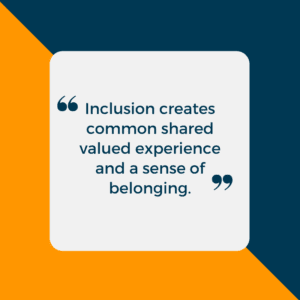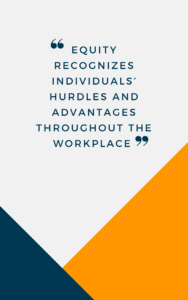What is Diversity, Equity and Inclusion in Academia
Since our founding the concept of diversity has changed dramatically and evolved further to help institutions to fairly incorporate diverse groups. Diversity, Equity and Inclusion (DEI) in Academia is now the foremost concept to give guidance to universities and other institutions to have their diverse staff thrive within their workplace.
Diversity
Diversity is commonly used and talked about at the workplace. However, it is often misunderstood, and its definition has blurred. Frequently diversity is applied to individuals. It needs to be pointed out that a person cannot be diverse. A group of different individuals may be diverse. This is an important point to remember since labeling someone as diverse undermines their individualism and places them as other than a perceived default, which is usually systemically privileged individuals who may not necessarily be the majority. A diverse group includes the presence of differences. Diversity is represented in race, ethnicity, gender identity, sexual orientation, age, and socioeconomic class, as well as physical ability, veteran status, whether or not you have kids. Other aspects that need to be considered are diversity of thought.
Inclusion
 Once diversity became a focus and institutions began to hire underrepresented groups it became evident that the status quo work environment did not result in employee retention. Diverse groups cannot work well together unless they feel valued, and their needs are heard. Inclusion requires the employer to go beyond numbers of representation and create common shared valued experience and a sense of belonging. Inclusion maintains diversity because it allows all employees to be their selves at work while maintaining a professional, collaborative, and productive environment.
Once diversity became a focus and institutions began to hire underrepresented groups it became evident that the status quo work environment did not result in employee retention. Diverse groups cannot work well together unless they feel valued, and their needs are heard. Inclusion requires the employer to go beyond numbers of representation and create common shared valued experience and a sense of belonging. Inclusion maintains diversity because it allows all employees to be their selves at work while maintaining a professional, collaborative, and productive environment.
Equity
While inclusion is a vital element to ensure that all individuals at  the workplace feel welcome, one must recognize that everyone
the workplace feel welcome, one must recognize that everyone
must have access to resources, rewards, and any necessary support. Equity recognizes individuals’ hurdles and advantages throughout the workplace. By addressing them every employee has the opportunity of equal possible outcomes in their career and personal growth. Equity is not equality since each individual may not start at the same level, and require support and resources to be as successful as others. For example, job applications could be standardized so that each candidate has an equal chance to apply and being interviewed. Additionally, companies need to recognize that underrepresented groups work harder because they are being asked to help with diversity discussions and equal rights policies within the company. While it is honorable of the employer to include many groups in the decision making it is vital to compensate them for the additional time they invest.
How does DEI apply to academia?
Universities have been the pioneers of diversity and inclusion for decades. The primary reason universities moved forward on this mission is due to student demands. Students insisted to have teachers and mentors that are relatable and showed them that a career in academia or other university jobs welcome individuals of all backgrounds. Some institutions of higher learning start to develop programs to teach their students the skills to implement DEI in the workplace. For example, the University of Michigan initiated a Graduate Student DEI Professional Development Certificate Program.
Institutions can apply DEI in a multitude of ways and state their agendas as a moral or instrumental perspective. Stating a moral commitment often results in the mission to correct injustice, while the instrumental strategy helps to highlight the benefits of diversity to more privileged groups. The latter approach while emphasizing the beneficial learning outcomes of increased diversity, instrumental diversity may end up being more beneficial to the privileged groups rather than the underrepresented individuals it was developed for. It appears that a dual approach of moral and instrumental strategy is applied to bring equity to all individuals and have more privileged groups understand the benefits.
Begin to become a DEI leader today and post a job.
Search for leading institutions looking to higher you.



